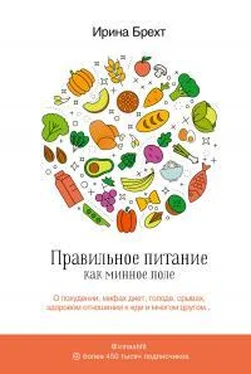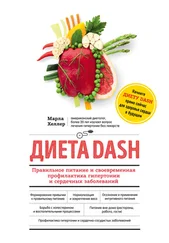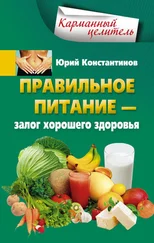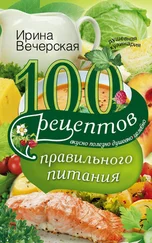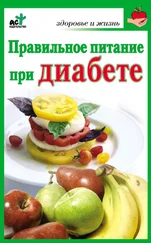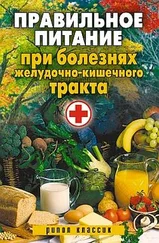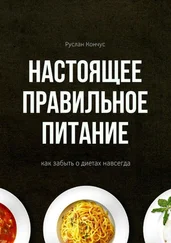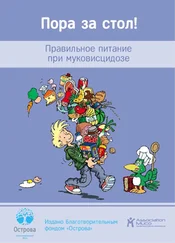4. Dulloo AG, Jacquet J, Montani JP, Schutz Y. How dieting makes the lean fatter: from a perspective of body composition autoregulation through adipostats and proteinstats awaiting discovery. Obes Rev. 2015 Feb; 16 Suppl 1:25–35.
5. National Institutes of Health Technology Assessment Conference Panel (1993) Methods for voluntary weight loss and control. Ann Intern Med 119, 764–770.
6. Mann, T, Tomiyama, AJ, Westling, E et al. (2007) Medicare’s search for effective obesity treatments: diets are not the answer. Am Psychol 62, 220–233.
7. Stice, E, Cameron, RP, Killen, JD et al. (1999) Naturalistic weight-reduction efforts prospectively predict growth in relative weight and onset of obesity among female adolescents. J Consult Clin Psychol 67, 967–974.
8. Korkeila, M, Rissanen, A, Kaprio, J et al. (1999) Weight-loss attempts and risk of major weight gain: a prospective study in Finnish adults. Am J Clin Nutr 70, 965–975.
9. Pietila#inen, KH, Saarni, SE, Kaprio, J et al. (2011) Does dieting make you fat? A twin study. Int J Obes 36, 456–464.
10. Martin, E & Demole, M (1973) Une expérience scientifique d’alimentation controlée: le rationnement en Suisse pendant la deuxie1me guerre mondiale (A scientific experiment of controlled food intake: food rationing in Switzerland during World War II). In Régulation de l’Equilibre Energétique chez l’Homme, Vol. 1, pp. 185–193 [Apfelbaum, M]. Paris: Masson.
11. Kruger J, Galuska DA, Serdula MK, Jones DA. Attempting to lose weight: specific practices among U.S. adults. Am J Prev Med. 2004 Jun;26(5):402—6.
12. Votruba SB, Jensen MD. Sex-specific differences in leg fat uptake are revealed with a high-fat meal. Am J Physiol Endocrinol Metab. 2006 Nov;291(5):E1115—23.
13. Tang M, Leidy HJ, Campbell WW. Regional, but not total, body composition changes in overweight and obese adults consuming a higher protein, energy-restricted diet are sex specific. Nutr Res. 2013 Aug;33(8):629—35. doi: 10.1016/j.nutres.2013.05.012.
14. Singh P, Somers VK, Romero-Corral A, et al. Effects of weight gain and weight loss on regional fat distribution. The American Journal of Clinical Nutrition. 2012;96(2):229–233. doi:10.3945/ajcn.111.033829.
15. Koutsari C, Ali AH, Mundi MS, Jensen MD. Storage of circulating free fatty acid in adipose tissue of postabsorptive humans: quantitative measures and implications for body fat distribution. Diabetes. 2011 Aug;60(8):2032—40. doi: 10.2337/db11—0154
16. Felig P. et. al. Blood glucose and gluconeogenesis in fasting man. Arch Intern Med (1969) 123: 293–298.
17. Jungas RL et. al. Quantitative analysis of amino acid oxidation and related gluconeogenesis in humans Phys Rev (1992) 72: 419–448.
18. Felig P. et. al. Amino acid metabolism during prolonged starvation. J Clin Invest (1969) 48: 584–594.
19. Smith CF et. al. Flexible vs. Rigid dieting strategies: relationship with adverse behavioral outcomes. Appetite. (1999) 32(3): 295–305.
20. Westenhoefer J et. al. Cognitive and weight-related correlates of flexible and rigid restrained eating behaviour. Eat Behav. (2013) 14(1): 69–72.
21. Westenhoefer J et. al. Validation of the flexible and rigid control dimensions of dietary restraint. Int J Eat Disord. (1999) 26(1): 53–64.
22. Westenhoefer J et al. Behavioural correlates of successful weight reduction over 3 y. Results from the Lean Habits Study. Int J Obes Relat Metab Disord. (2004) 28(2): 334–335.
23. Stewart TM et. al.Rigid vs. flexible dieting: association with eating disorder symptoms in non obese women. Appetite. (2002) 38(1): 39–44.
24. Hill AJ. The psychology of food craving. Proc Nutr Soc. (2007) 66(2): 277–285.
25. Meule A, Westenhо#fer J, Ku#bler A. Food cravings mediate the relationship between rigid, but not flexible control of eating behavior and dieting success. Appetite. 2011 Dec; 57(3): 582–584.
26. Meule A, Papies EK, Ku#bler A. Differentiating between successful and unsuccessful dieters. Validity and reliability of the Perceived Self-Regulatory Success in Dieting Scale. Appetite. 2012 Jun; 58(3): 822–826.
27. Stewart TM, Williamson DA, White MA. Rigid vs. flexible dieting: association with eating disorder symptoms in nonobese women. Appetite. 2002 Feb; 38(1): 39–44.
28. Acheson KJ et al. Caffeine and coffee: their influence on metabolic rate and substrate utilization in normal weight and obese individuals. Am J Clin Nutr. 1980 May;33(5):989—97.
29. Wikoff D et al. Systematic review of the potential adverse effects of caffeine consumption in healthy adults, pregnant women, adolescents, and children. Food Chem Toxicol. 2017 Nov;109(Pt 1):585–648. doi: 10.1016/j.fct.2017.04.002.
30. Meredith SE, Juliano LM, Hughes JR, Griffiths RR. Caffeine Use Disorder: A Comprehensive Review and Research Agenda. Journal of Caffeine Research. 2013;3(3):114–130. doi:10.1089/jcr.2013.0016.
31. U.S. Food and Drug Administration. Public Notification: Oxy ELITE Pro Super Thermogenic contains hidden drug ingredient. https://www.fda.gov/drugs/resourcesforyou/consumers/buyingusingmedicinesafely/medicationhealthfraud/ucm436017.htm
32. Jay Udani, MD et al. Blocking Carbohydrate Absorption and Weight Loss: A Clinical Trial Using Phase 2™ Brand Proprietary Fractionated White Bean Extract. Altern Med Rev 2004;9(1):63—69
33. Jay Udani, MD; Betsy B. Singh, PhD. BLOCKING CARBOHYDRATE ABSORPTION AND WEIGHT LOSS: A CLINICAL TRIAL USING A PROPRIETARY FRACTIONATED WHITE BEAN EXTRACT. (Altern Ther Health Med. 2007;13(4):32—37
34. Bo-Linn GW, Santa Ana CA, Morawski SG, Fordtran JS. Starch blockers-their effect on calorie absorption from a high-starch meal. N Engl J Med. 1982 Dec 2;307(23):1413—6.
35. Barbara Grube, Wen-Fen Chong, Pee-Win Chong, Linda Riede. Weight reduction and maintenance with IQP-PV-101: A 12-week randomized controlled study with a 24-week open label period. The Obesity (2013). doi.org/10.1002/oby.20577
36. R. LUZZI et al. Beanblock® (standardized dry extract of Phaseolus vulgaris) in mildly overweight subjects: a pilot study. European Review for Medical and Pharmacological Sciences. 2014; 18: 3120—3125
37. Gades MD, Stern JS. Chitosan supplementation does not affect fat absorption in healthy males fed a high-fat diet, a pilot study. Int J Obes Relat Metab Disord. 2002 Jan;26(1):119—22.
38. Guerciolini R, Radu-Radulescu L, Boldrin M, Dallas J, Moore R. Comparative evaluation of fecal fat excretion induced by orlistat and chitosan. Obes Res. 2001 Jun;9(6):364—7.
39. Jull AB, Ni Mhurchu C, Bennett DA, Dunshea-Mooij CA, Rodgers A. Chitosan for overweight or obesity. Cochrane Database Syst Rev. 2008 Jul 16;(3):CD003892. doi: 10.1002/14651858.CD003892.pub3.
40. Padwal R, Li SK, Lau DC. Long-term pharmacotherapy for obesity and overweight. Cochrane Database Syst Rev. 2004;(3):CD004094.
41. William S. Yancy Jr, MD, MHS et al. A Randomized Trial of a Low-Carbohydrate Diet vs Orlistat Plus a Low-Fat Diet for Weight Loss. Arch Intern Med. 2010;170(2):136–145. doi:10.1001/archinternmed.2009.492
42. Joa˜o R Araújo and Fátima Martel. Sibutramine Effects on Central Mechanisms Regulating Energy Homeostasis. Curr Neuropharmacol. 2012 Mar; 10(1): 49–52.
43. Arterburn DE et al. Arch Intern Med. 2004 May 10;164(9):994—1003. The efficacy and safety of sibutramine for weight loss: a systematic review.
44. André J. Scheen, MD, PHD. Sibutramine on Cardiovascular Outcome. Diabetes Care. 2011 May; 34(Suppl 2): S114—S119.
45. Davies DL, Wilson GM. Diuretics: mechanism of action and clinical application. Drugs. 1975;9(3):178–226.
46. Sica DA. Diuretic-related side effects: development and treatment. J Clin Hypertens (Greenwich). 2004 Sep;6(9):532—40.
47. Flanagan JL, Simmons PA, Vehige J, Willcox MD, Garrett Q. Role of carnitine in disease. Nutrition & Metabolism. 2010;7:30. doi:10.1186/1743—7075—7-30.
Читать дальше
Конец ознакомительного отрывка
Купить книгу
